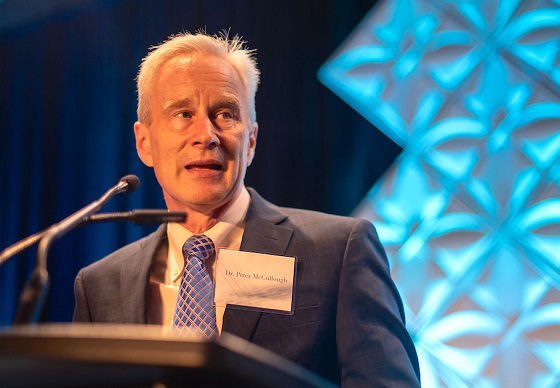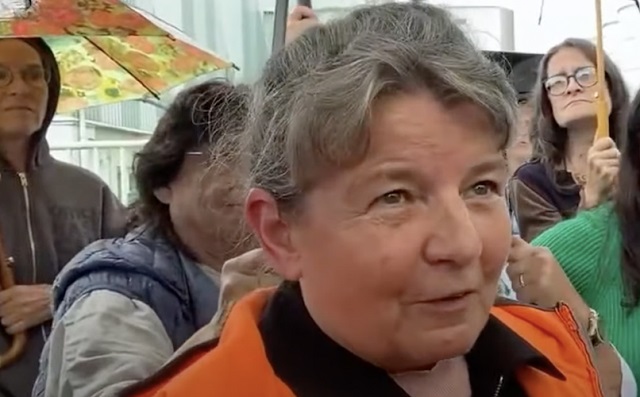Opinion
‘Transgender’ inmates are continuing to sexually assault female prisoners

From LifeSiteNews
By Jonathon Van Maren
The Mail reported that the California prison system has 1,997 detainees who currently identify as transgender and non-binary, and 345 male prisoners have requested transfers to women’s prisons.
Sixty-six-year-old Dana Sue Gray does not cut a sympathetic figure. She is currently serving a life sentence in Central California’s Women’s Facility (CCWF) – a women’s prison – for murdering and then robbing three of her elderly neighbours in the 1990s and going on a shopping spree. Recently, however, she has reportedly been sexually assaulted in jail – by a trans-identifying man serving his sentence with the women.
According to a report by the Daily Mail, Gray reports that she began sharing a dormitory with the trans-identifying male convict early in 2023, and that initially relations were “real friendly.” That soon changed as he became first verbally abusive, and then sexually abusive. One night, the man launched an all-out assault. “He came into my bed area and pulled his pants down and shoved his d***k in my face,” Gray told the Independent Women’s Forum.
Gray described the experience as “terrifying and disgusting” and told the man to back off. The first assault, she says, was merely a “show of male dominance.” He reappeared the following night, and this time he “put that big man hand on my back, on my shoulder blade” while she was sleeping. She woke up panicking and told him: “Stay the F out of my area. Don’t ever come to my area. Don’t ever touch me.” She told a guard, and the man was moved to a different yard – but still in the women’s prison. She did not file a formal complaint alleging assault for fear that she would have been isolated.
Gray is not the only female inmate to be assaulted of late. California has sent trans-identifying men to female prisons since 2020, when Senate Bill 123 was signed into law by Governor Gavin Newsom. Men can be sent to female prisons merely by claiming to be a woman – so-called “self-identification” – and do not have to have any sex change procedures or hormone treatments prior to being transferred. According to both Gray and other prisoners, the arrival of males in female prisons has transformed them.
“It’s disgusting and I have to be polite and deal with it for my own safety, and so that I have a less stressful day, but I don’t like it,” she said. “I don’t want any of them here. I want them to go away. It degrades women so bad.” Many of the women, she added, are poorly educated and particularly vulnerable. The Mail reported that the California prison system has 1,997 detainees who currently identify as transgender and non-binary, and 345 male prisoners have requested transfers to women’s prisons. Thus far, “46 were approved, 64 were denied, and 87 inmates have changed their minds.”
The California Department of Corrections insists that all requests are carefully reviewed, and that transfers are only approved when it is “safe to do so.” This is obviously not the case. Stories of women being sexually assaulted by trans-identifying men behind bars have come out everywhere the practice has been implemented, including Canada, the U.K., and the U.S. Fifty-one-year-old Tremaine Carroll, a trans-identifying man, has been charged with raping two women after being moved to the Central California’s Women’s Facility. He is six foot two, and one of his victims was a slight female in her thirties. He raped her in the shower of their shared dormitory. She is still suffering enormous trauma as a result.
There are plenty of other recent examples, as well. A murderer in Spain serving a 30-year prison sentence for murdering his female neighbor is now identifying as female – and getting transferred to a women’s prison. Other criminals are getting in on the grift, too, hoping it might result in cushier sentences: a violent serial rapist in Scotland has just announced his in-prison transition and demanded “gender affirming” care; an American pedophile convicted of raping his 7-year-old stepdaughter is appealing his life sentence after announcing he is now transgender; last month, a U.K. pedophile was sentenced to a mere 16 months prison, and claims to identify as a 5-year-old girl.
The sexual assault of Dana Sue Gray is just one example of a phenomenon unfolding everywhere the transgender movement has implemented its agenda. She richly deserves the life sentence she received, and she deserves to spend the rest of her life in prison. But to be locked up with a violent man who wishes to rape her is something different. I believe the best way to describe it would be “cruel and unusual punishment.”
Heartland Daily News
Biden, Trump Spar Over Inflation, Border, More in First Presidential Debate

From Heartland Daily News
President Joe Biden and former President Donald Trump grappled over inflation, illegal immigration, abortion and more during the first debate of this election cycle Thursday night in Atlanta.
A Quinnipiac poll released the day before the debate shows Trump with a 49%-45% lead over Biden, showing Biden needed to turn the tide Thursday night. But throughout the debate, Biden showed moments of murmuring, trailing off or seeming to lose his train of thought.
“I really don’t know what he said at the end of that sentence,” Trump said early in the debate. “I really don’t think he knows what he said either.”
Questions have surrounded Biden, 81, for a growing number stumbles and miscues in recent months.
CNN’s Jake Tapper, one of the debate’s two co-hosts, began by pointing to the rise of prices under Biden’s tenure, a 20% increase in food prices and a 30% increase for housing.
“Everything was rockin’ good,” Trump said, touting the economy, lack of wars and more during his term. “The only jobs [Biden] created are for illegal immigrants and bounceback jobs,” referring to jobs created by ending the COVID-19 lockdowns.
Biden defended himself, claiming Trump caused inflation, and touted the economic recovery after the COVID lockdown era. Biden also touted his work to lower the costs of prescription drugs.
Abortion, which is expected to be a major issue this election, took a prime spot in the debate. Biden promised to restore Roe v. Wade federal protections and blasted Trump, saying he would sign a conservative nationwide abortion ban.
Trump said he agreed with the recent U.S. Supreme Court issue allowing the abortion pill and blasted Biden and Democrats for their support of Roe v. Wade, saying it allows late term abortion. Trump argued the issue should go to the states.
Both candidates traded barbs throughout the debate. Biden called Trump a convicted felon and said he has the “morals of an alley cat.” Trump was convicted last month on 34 felony counts related to falsifying business documents to cover up hush money payments to a former porn actress.
“Everything he does is a lie,” Trump shot back later in the debate.
Trump repeatedly veered the debate back toward illegal immigration, crime committed by illegal immigrants, and the impact of migrants on entitlement programs.
Trump blasted Biden on the southern border crisis, saying that “because of [Biden’s] ridiculous, insane and very stupid policies” Americans are being killed, calling it “Biden migrant crime.”
Trump said the flood of illegal immigrants are bankrupting entitlement programs in the U.S.
“Our veterans are living on the street and these people are living in luxury hotels,” Trump said. “I’ve never seen such anger in our country before.
“He wants our country to either be destroyed or he wants to pick up those people as voters,” Trump continued.
When questioned about his role in the Jan. 6 storming of the Captiol, Trump pointed out that he called on protesters to act “peacefully and patriotically” and offered 10,000 National Guard troops for security prior to the protests but former House Speaker Nancy Pelosi and Washington, D.C. Mayor Muriel Bowser turned them down.
Biden said the Jan. 6 protesters who have been prosecuted deserve to be in jail, but Trump defended many of them, saying some of them are “so innocent” and that rioters in other cities like Portland did not go to jail.
The debate was moderated by CNN anchors Jake Tapper and Dana Bash in Atlanta.
This debate is an antecedent to two major political conventions, The Republican National Convention (RNC) and Democratic National Convention (DNC), which are scheduled for July and August, respectively.
Thursday night marked Trump and Biden’s first debate against each other in four years. The first presidential debate between them took place in Sept. 2020, during the time when Trump was still in office as U.S. president. Trump and Biden were scheduled to have a second debate on Oct. 15 2020, which ultimately was canceled. The final Trump-Biden debate of 2020 occurred on Oct. 22 2020.
Another debate is expected between the two candidates this election cycle on Sept. 10.
Originally published by The Center Square. Republished with permission.
Alberta
Alberta government must further restrain spending to stabilize provincial finances
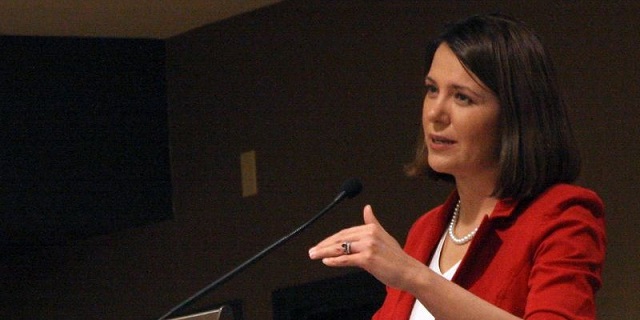
From the Fraser Institute
By Tegan Hill
This year, program spending will reach a projected $14,334 per Albertan, which is $1,603 more per person (inflation-adjusted) than the Smith government originally planned to spend this year as outlined in the 2022 mid-year budget update.
Despite recording a $4.3 billion surplus last year, Premier Danielle Smith remains committed to a new approach to Alberta finances that relies less heavily on resource revenue, which includes restraining spending levels below the rate of inflation and population growth. That’s a big step forward, but is it enough to stabilize Alberta’s boom and bust rollercoaster?
First, some background.
After nearly a decade and a half of routine budget deficits, Alberta swung to a budget surplus when resource revenue (which includes includes oil and gas royalties) skyrocketed from $3.1 billion in 2020/21 to $16.2 billion in 2021/22. In 2022/23, the government enjoyed the highest level of resource revenue on record and relatively high levels have continued in recent years. Correspondingly, Alberta’s surpluses have continued.
Alberta governments have a habit of increasing spending during times of high resource revenue, such as the province is currently experiencing, to levels that are unsustainable without incurring deficits when resource revenue inevitably declines. That’s why the Smith government’s commitment to spending restraint is an important one.
Unfortunately, however, due to the Smith government’s spending increases in previous years, this restraint won’t go as far in stabilizing provincial finances. Moreover, there are a number of limitations and exceptions to these new spending rules that may impede their effectiveness.
Consider that this year, program spending will reach a projected $14,334 per Albertan, which is $1,603 more per person (inflation-adjusted) than the Smith government originally planned to spend this year as outlined in the 2022 mid-year budget update.

As shown above, program spending (inflation-adjusted) will reach a projected $14,041 per person in 2025/26 and a projected $13,750 per person in 2026/27, which is equivalent to per-person increases of $1,571 and $1,538, respectively, compared to the original plan in 2022.
So while per-person (inflation-adjusted) spending is set to decline, which aligns with the Smith government’s commitment, this restraint is starting from a higher base level due to spending decisions thus far. That means more work needs to be done to rein in spending.
Indeed, for perspective, if the Smith government had simply stuck to its original plan, spending would be closely aligned with stable, more predictable sources of revenue. And ultimately, that’s the way to avoid deficits.
There’s also several limitations and exceptions for the government’s new spending rule. For example, the spending limit applies only to “operating expense,” which does not include longer-term spending, disaster and emergency assistance, spending related to dedicated revenue, or contingencies. As a result of various limits and exceptions, total program spending growth in 2023/24 exceeds inflation and population growth by 1.8 percentage points. Put simply, these limitations and exceptions add to the risk of budget deficits.
Sustainable finances have been impeded by increases in per person spending since 2022. So while the Smith government deserves credit for its commitment to restrain spending moving forward, Alberta’s fiscal challenges aren’t over.
Author:
-
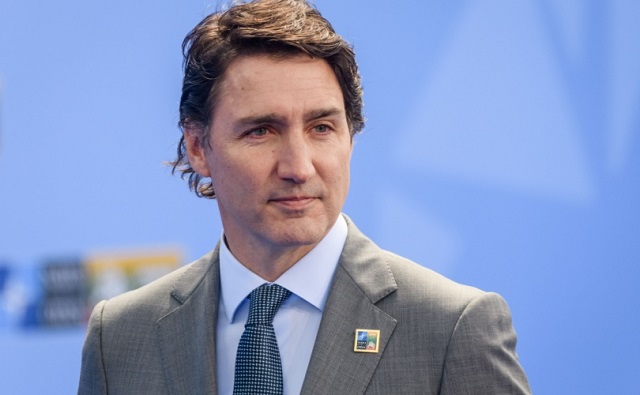
 Education2 days ago
Education2 days ago40 Canadian professors urge Trudeau government to abolish DEI mandates
-
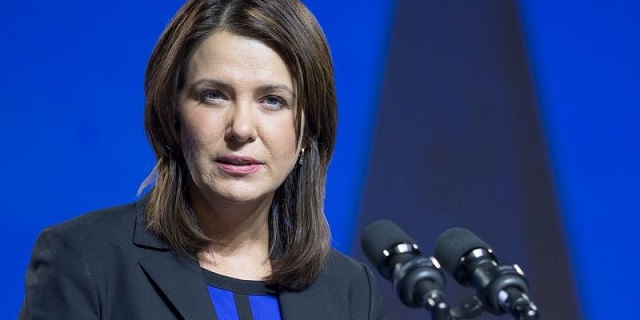
 Alberta1 day ago
Alberta1 day agoDon’t use Alberta’s Heritage Fund to pick ‘winners and losers’
-

 CBDC Central Bank Digital Currency1 day ago
CBDC Central Bank Digital Currency1 day agoKlaus Schwab pushes ‘fourth industrial revolution’ at WEF’s ‘Summer Davos’ opening
-

 Politics2 days ago
Politics2 days agoWorries About ‘Existential Threat’ From Climate Change Suddenly Put On Hold For Paris Olympics
-
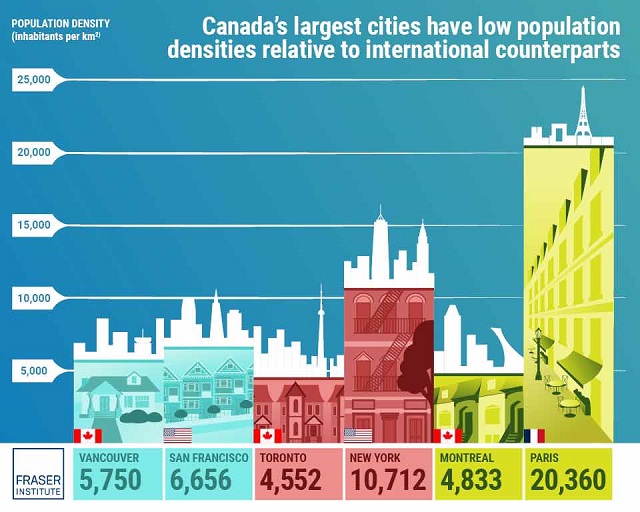
 Fraser Institute2 days ago
Fraser Institute2 days agoUrban Population Densities in Canada and Abroad—an Update
-

 Bruce Dowbiggin22 hours ago
Bruce Dowbiggin22 hours agoBye-Bye Election: Turn Out The Lights, The Party’s Over
-
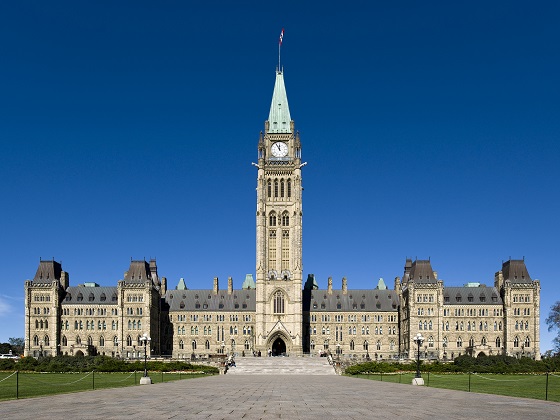
 Business1 day ago
Business1 day agoCut corporate income taxes massively to increase growth, prosperity
-

 Economy21 hours ago
Economy21 hours agoCanadians face serious economic costs due to health-care wait times




